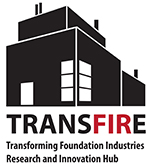Energy Benchmarking of Manufacturing Processes in Foundation Industries
As industry increasingly looks at ways to reduce their environmental impacts, manufacturing processes have come under greater scrutiny. The manufacturing sector accounts for 38% of global energy consumption and 25% of global CO2 emissions, much of which comes from process energy and electricity consumption. To reduce these emissions, it is imperative to find ways to reduce the energy consumption in manufacturing either using more energy-efficient equipment and processes or by moving towards to renewable energy. In order to identify areas of inefficiency and which changes will have the greatest impact, benchmarking energy consumption, or determining the “best practices”, in manufacturing processes is a critical step. By comparing energy utilisation data to industry standards or to similar operations, manufacturers can get a greater understanding of their energy consumption and determine the areas to tackle first for the greatest effect. External benchmarking, against other companies within the same sector, and internal [...]



